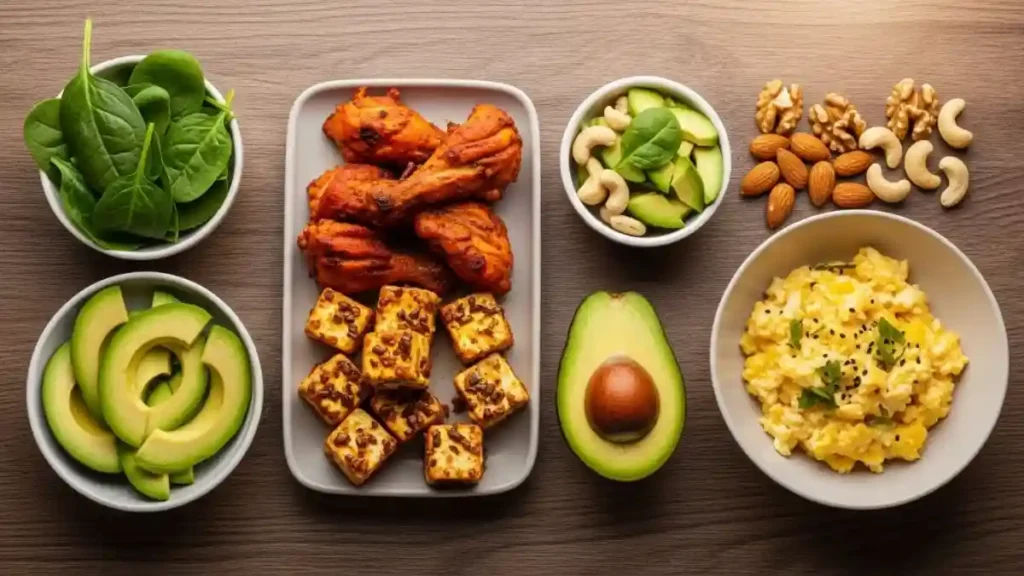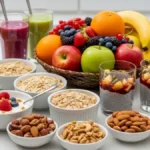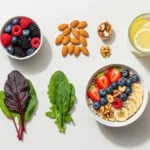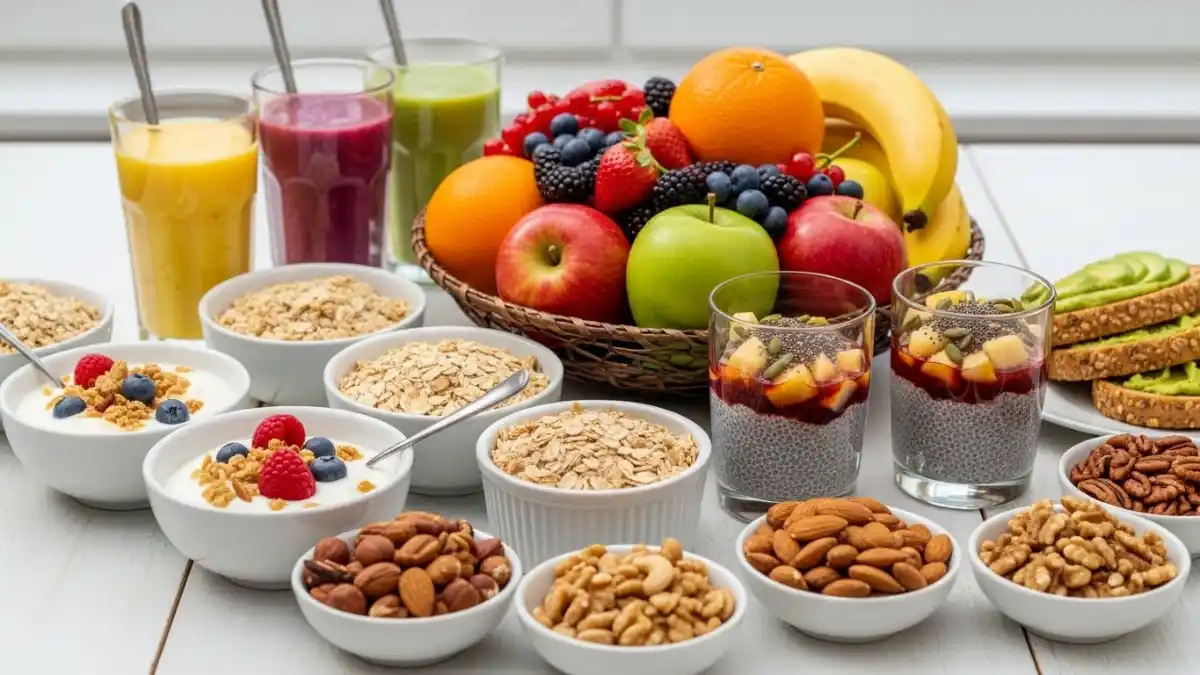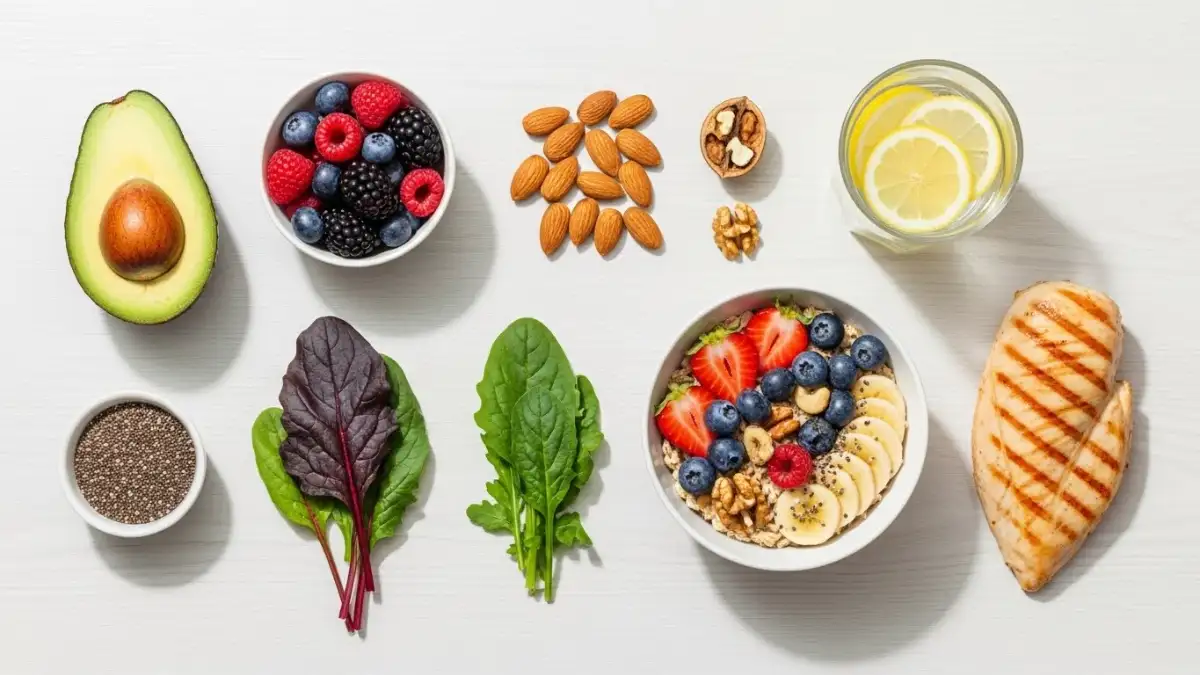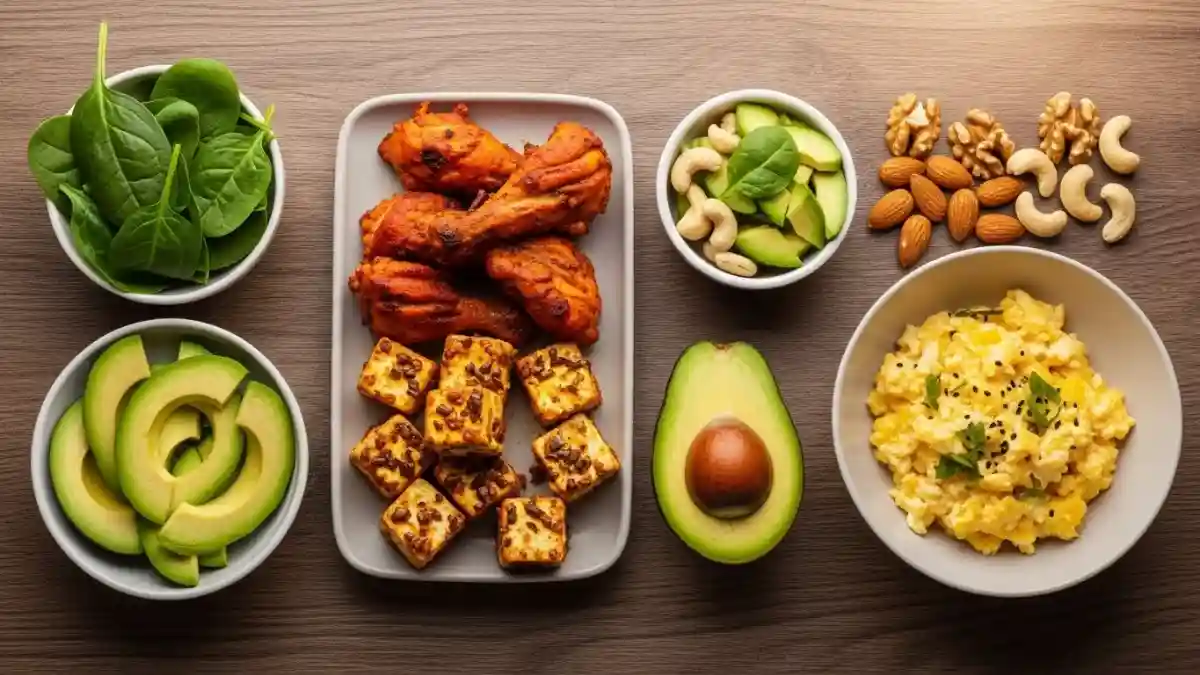The Keto Diet for Indians has become an effective approach for weight loss, improved energy, and better metabolic health. Although Indian meals are naturally carb-rich due to rice, chapati, dal, poha, idli, and similar items, the keto diet can still fit well into the Indian lifestyle with the right food choices.
This complete guide explains what the keto diet is, its benefits, the best Indian keto foods, a full-day meal plan, vegetarian and non-vegetarian options, success tips, and precautions. This article is SEO-optimized, highly readable, and beginner-friendly.
What Is a Keto Diet?
A Keto or Ketogenic diet is a low-carbohydrate, moderate-protein, high-fat eating pattern. It shifts your body’s metabolism into a state called ketosis, where your body burns fat instead of carbohydrates for energy.
Standard Keto Macronutrient Breakdown:
- 70–75% Fat
- 20–25% Protein
- 5–10% Carbohydrates
To understand the basics of keto more deeply, you can also read this detailed internal guide: What Is a Keto Diet & How It Works
Why Keto Diet Works Well for Indians
Indian kitchens already use many keto-friendly ingredients such as paneer, ghee, coconut, eggs, chicken, and a variety of vegetables. This makes it easier for Indian households to follow keto meals without drastic lifestyle changes.
Indian spices also make keto meals flavorful and easier to enjoy daily.
Benefits of Keto Diet for Indians
1. Fast Weight Loss
Keto encourages the body to burn stored fat, leading to rapid fat loss.
2. Improves Blood Sugar Levels
Low-carb eating helps maintain stable insulin levels.
3. Reduces Hunger and Cravings
Healthy fats keep you full for longer periods.
4. Improves Energy Levels
Keto provides steady energy throughout the day.
5. Supports PCOS and Thyroid (With Medical Guidance)
Many Indian women with hormonal issues benefit from better metabolic stability.
Keto-Friendly Indian Foods (Vegetarian & Non-Vegetarian)
Vegetarian Indian Keto Foods
- Paneer
- Tofu
- Ghee
- Butter
- Coconut and coconut milk
- Cauliflower
- Zucchini
- Spinach
- Mushrooms
- Broccoli
- Cabbage
Non-Vegetarian Keto Foods
- Eggs
- Chicken
- Fish such as Rohu, Salmon, Katla
- Mutton
- Prawns
Healthy Fats
- Coconut oil
- Olive oil
- Avocado
- Almonds
- Walnuts
- Flax seeds
- Chia seeds
Zero-Carb Drinks
- Water
- Black coffee
- Green tea
- Lemon water without sugar
One-Day Sample Indian Keto Diet Meal Plan
Breakfast
Masala omelette with spinach
or
Paneer bhurji cooked in ghee
Mid-Morning Snack
A handful of walnuts or almonds
Black coffee
Lunch
Butter chicken or paneer cooked with spices
Stir-fried vegetables (broccoli, bell peppers)
Evening Snack
Green tea
Coconut chips
Dinner
Grilled chicken with sautéed vegetables
or
Paneer tikka with low-carb vegetables
Indian Vegetarian Keto Meal Ideas
- Palak paneer
- Cauliflower rice pulao
- Butter paneer
- Keto upma made with cauliflower
- Keto dosa using almond flour
- Mushroom curry
Vegetarian keto becomes easy when paneer, coconut, and low-carb vegetables are included.
Foods to Avoid on a Keto Diet in India
- Rice
- Roti, chapati, wheat flour
- Dal, rajma, chole, beans
- Bread and biscuits
- Sugar and sweets
- Namkeen and packaged snacks
- Milk (opt for limited use due to carbs)
- Potatoes and sweet potatoes
- Corn and peas
- Most fruits except berries
How to Start the Keto Diet for Indians
Step 1: Reduce Carbs to 20–30g Per Day
Remove rice, wheat, sugar, and starchy foods.
Step 2: Increase Healthy Fats
Use ghee, coconut oil, paneer, nuts, eggs and fish.
Step 3: Eat Moderate Protein
Too much protein may impact ketosis.
Step 4: Drink Enough Water
Stay hydrated to avoid fatigue and discomfort.
Step 5: Track Your Macros
Use apps like MyFitnessPal, HealthifyMe, and Carb Manager.
Step 6: Expect Keto Flu
Symptoms like headache, low energy, and nausea are temporary.
Step 7: Stay Consistent
It takes 1–2 weeks to enter ketosis.
Common Keto Diet Myths in India
Myth 1: Keto is not suitable for vegetarians
Truth: Vegetarian keto is absolutely possible with paneer, ghee, vegetables and nuts.
Myth 2: Keto requires too much fat
Truth: Keto focuses on healthy fats, not junk fats.
Myth 3: Keto is harmful
Truth: Keto is safe for most healthy individuals when planned correctly.
Possible Side Effects of Keto
- Headache
- Fatigue
- Nausea
- Irritability
- Muscle cramps
These issues usually disappear within a week.
For detailed research and studies on keto, refer here: A Detailed Beginner’s Guide to The Ketogenic Diet
Keto Diet Success Tips for Indians
- Cook meals in ghee or coconut oil
- Replace rice with cauliflower rice
- Opt for paneer or eggs daily
- Avoid packaged snacks
- Drink enough water
- Prepare weekly meal plans
- Choose home-cooked meals for accuracy
Consistency leads to long-term success.
Conclusion
The Keto Diet for Indians is easy to follow, highly effective, and adaptable to Indian food culture. With familiar ingredients like paneer, ghee, vegetables, chicken, eggs and coconut oil, keto meals can be simple, delicious, and sustainable.
By following the Indian keto meal plan, reducing carbs, and maintaining healthy fats, you can experience weight loss, better energy, and improved well-being. Staying disciplined and tracking your daily intake will help you see positive results within weeks.
This complete guide provides everything a beginner needs to start the keto journey confidently.

